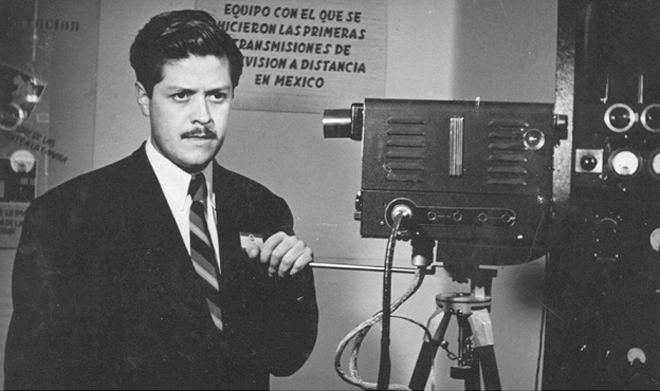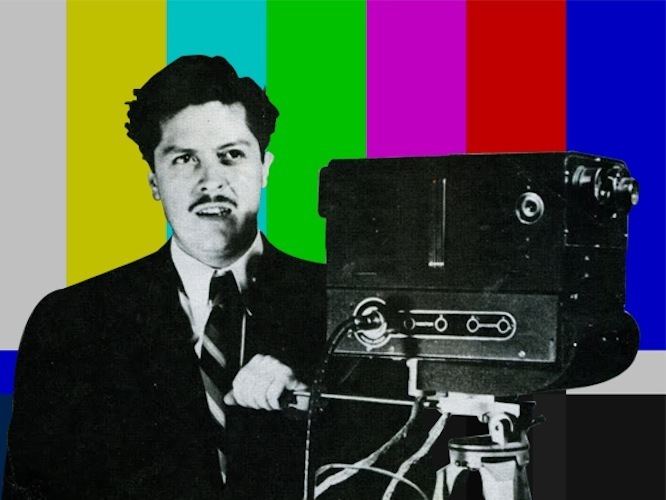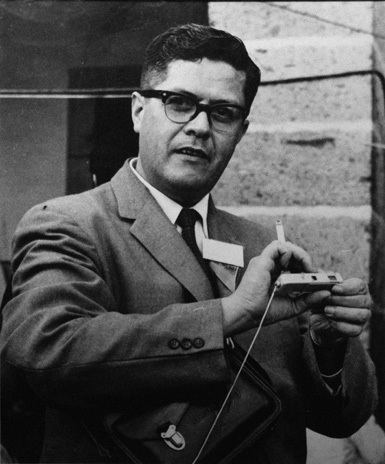Nationality Mexican Name Guillermo Camarena | Role Engineer | |
 | ||
Born February 17, 1917 Guadalajara, Jalisco Parent(s) Diana Paulina Aldana Ramirez Spouse Marie Antoinette Becerra Acosta (m. 1951–1965) Education Instituto Politecnico Nacional Similar José Hernández Rebollar, Luis E Miramontes, Mario J Molina | ||
Google pays tribute to Mexican engineer Guillermo González
Guillermo González Camarena (17 February 1917 – 18 April 1965), was a Mexican electrical engineer who was the inventor of a color-wheel type of color television, and who also introduced color television to Mexico.
Contents
- Google pays tribute to Mexican engineer Guillermo Gonzlez
- Minibiograf as guillermo gonz lez camarena
- Early life
- Career and Inventions
- Death
- Legacy
- References
Minibiograf as guillermo gonz lez camarena
Early life

Born in Guadalajara in 1917, his family moved to Mexico City when Guillermo was almost 2 years old. As a boy he made electrically propelled toys, and at the age of twelve built his first amateur radio.

González Camarena was born into a family composed of Arturo González and Sara Camarena, originally from Arandas, Jalisco. One of his older brothers, Jorge, was a prominent painter, muralist and sculptor.

In 1945 he graduated from the Escuela Superior de Ingenería Mecánica y Eléctrica (School of Mechanical and Electrical Engineers, ESIME) at the National Polytechnic Institute, ''IPN'' ; he obtained his first radio license two years later.

He was also an avid stargazer; he built his own telescope and became a regular member of the Astronomical Society of Mexico.
Career and Inventions

González Camarena invented the "Chromoscopic adapter for television equipment", an early color television transmission system. He was only 17. A U.S. patent application (2,296,019) states, "My invention relates to the transmission and reception of colored pictures or images by wire or wireless..." The invention was designed to be easy to adapt to black-and-white television equipment. González Camarena applied for this patent August 14, 1941, and obtained the patent September 15, 1942. He also filed for additional patents for color television systems in 1960 and 1962.

On August 31, 1946, González Camarena sent his first color transmission from his lab in the offices of The Mexican League of Radio Experiments, at Lucerna St. #1, in Mexico City. The video signal was transmitted at a frequency of 115 MHz. and the audio in the 40 meter band.
He obtained authorization to make the first publicly announced color broadcast in Mexico, on February 8, 1963, Paraíso Infantil, on Mexico City's XHGC-TV, a station that he established in 1952. By that time, the government had adopted NTSC as the television color system.
Death
He died in a car accident in Puebla on April 18, 1965, returning from inspecting a television transmitter in Las Lajas, Veracruz.
Legacy
A field-sequential color television system similar to his Tricolor system was used in NASA's Voyager mission in 1979, to take pictures and video of Jupiter.
In 1995, a Mexican science research and technology group created La Fundación Guillermo González Camarena (The Guillermo González Camarena Foundation), which benefits creative and talented inventors in Mexico.
At the same time, the IPN began construction on the Centro de Propiedad Intelectual "Guillermo Gonzalez Camarena" (Guillermo González Camarena Intellectual Property Center).
